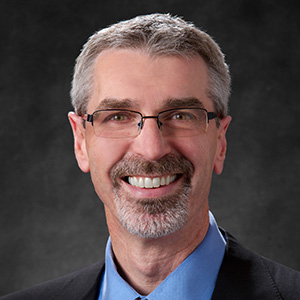Population Health
Blog Post
From Medical Care to Health and Well-being
Pronk suggests paradigm shift

At a recent LDI seminar, Nico Pronk, PhD, President of HealthPartners Institute, and Chief Science Officer of HealthPartners, Inc., called for a paradigm shift in how we think about health care in the U.S. “We pay a ton of money for medical care, [but] we don’t get a lot of value for that investment. Do we need more medical care, or do we actually need a shift towards more health and well-being?” he asked.
Dr. Pronk, Co-Chair of the Secretary’s Advisory Committee on National Health Promotion and Disease Prevention Objectives for 2030 (Healthy People 2030), and a member of the Community Preventive Services Task Force, defines ‘health and well-being’ as how people think, feel, and function at personal and social levels, and how they evaluate their lives. He sees ‘health’ and ‘well-being’ as separate, but related, states that have a close, mutually-reinforcing relationship. He stressed that the shift towards this way of thinking can, and should, be supported by meaningful and actionable metrics.
Dr. Pronk noted the mismatch between the factors that drive health and premature mortality, and how health care dollars are spent. While healthy behaviors and social and economic factors are the main drivers of health (together responsible for about 70 percent according to Pronk), only four percent of health care spending goes toward influencing healthy behaviors. This point was aptly picked up by LDI Senior Fellow and behavioral economics researcher Kevin Volpp on Twitter.
Dr. Pronk stressed that addressing this mismatch, and sustaining well-being for the population, does not lie with one sector. But the health system can do its part, he said, by achieving the ‘dynamic balance’ between promoting individual behavior change and providing an environment in which individuals can succeed. And the health system can engage in partnerships and support other solutions across the community.
Health systems can also focus efforts on a few interventions that could have an impact, including improving the well-being of their own workforce. HealthPartners has emerged as a national thought leader around wellness programs, as it has developed best practice program design principles for promoting worksite health and well-being.
The principles are in response to recent critiques of workplace wellness programs, which Pronk says fail to look at underlying program design. He suggests that the best programs have strong leadership, partnership, and are data-driven; these principles can be used to create a composite assessment score of any wellness program. In a recent study, Dr. Pronk and colleagues found that the higher the best practice program design assessment score, the fewer health risks in the population.
Responding to a question from the audience, Dr. Pronk suggested that health systems ask themselves the question, “Where do we have a lot of control, and where do we have little control, but much more influence?” Health systems have relatively more control over medical care than over social determinants, but can influence certain aspects of the greater environment. “We believe we need to be partnering, we need to be part of the dialogue, and we need an opportunity to influence where we can,” he added.